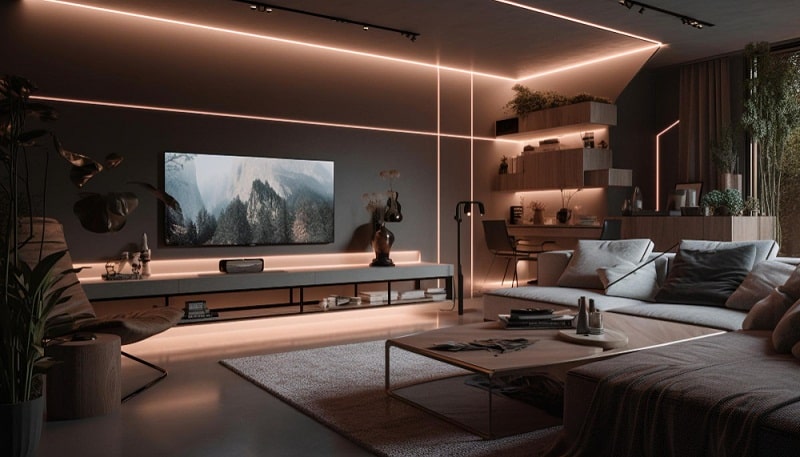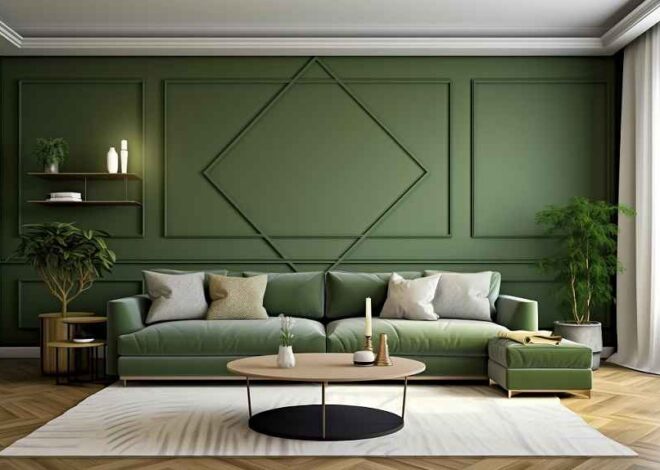
Where to Place Your TV Placement for Optimal Viewing
Setting up your TV in the right spot is more than just an aesthetic decision—it’s essential for enhancing your viewing experience. This guide will walk you through the best practices for TV placement to ensure you get the most out of your home entertainment setup. Whether you’re configuring a new living room or optimizing an existing space, understanding where to place your TV can significantly impact your enjoyment and comfort.
Factors to Consider for TV Placement
Viewing Distance
The distance between your TV and your seating area is pivotal. The ideal viewing distance is typically 1.5 to 2.5 times the diagonal screen size of your TV. For example, the optimal viewing distance for a 55-inch TV is between 82.5 to 137.5 inches (about 6.9 to 11.5 feet). Sitting too close can cause eye strain, while sitting too far can make it hard to see details, reducing image quality and immersion.
Ambient Lighting
Lighting can greatly affect your TV viewing experience. Direct sunlight or bright overhead lighting can produce glare and reflections, washing out images and causing eye strain. To manage lighting:
- Use curtains or blinds to control natural light.
- Avoid placing your TV opposite large windows.
- Use soft, indirect lighting to enhance visibility without glare.
Room Layout and Furniture Arrangement
The layout of your room plays a crucial role in TV placement:
- Center your TV in the main viewing area to avoid angles that can distort the picture.
- Avoid placing your TV in corners or against walls where it can’t be viewed comfortably from different areas of the room.
- Arrange your furniture so that it complements the TV placement, ensuring a comfortable and unobstructed viewing experience.
Optimal TV Placement Recommendations
Wall-mounted TVs
Wall-mounting is a popular option that saves space and can enhance room aesthetics. Here are some tips for wall-mounted TVs:
- Height: Mount your TV so the center of the screen is at eye level when seated. The typical height is about 42 to 60 inches from the floor, depending on your couch and chair heights.
- Tilt: Slightly tilting the TV downward can reduce glare and improve viewing angles, especially in rooms with variable lighting.
TV Stands and Entertainment Centers
If you prefer not to mount your TV, stands and entertainment centers are excellent alternatives:
- Height: Ensure the center of the screen is at or just below eye level when seated.
- Distance from Wall: Leave enough space between the TV and the wall for ventilation and cable management.
- Adjustability: Choose stands with adjustable features like tilt and swivel to fine-tune your viewing angle.
Considerations for Different Room Layouts
Living Rooms
- Seating: Arrange seating in a semicircle or U-shape around the TV.
- Placement: Center the TV on the main wall or within a built-in entertainment center.
- Height and Distance: Ensure the TV is placed at the right height and distance for optimal viewing.
Bedrooms
- Placement: Ideal placement is across from the bed or at the foot of the bed for easy viewing.
- Height: Generally, TVs in bedrooms should be positioned lower than in living rooms to match eye level when lying down.
- Lighting: Use soft, adjustable lighting to minimize glare and enhance comfort during viewing.
Home Theaters or Media Rooms
- Screen Size: Larger screens or projectors are ideal for a theater-like experience.
- Seating Layout: Use stadium-style seating to ensure every seat has an unobstructed view.
- Acoustics and Lighting: Optimize acoustics and lighting to mimic a real theater environment, enhancing the overall sensory experience.
Troubleshooting Common TV Placement Issues
Glare and Reflections
- Adjustments: Change the tilt or swivel of the TV to minimize glare.
- Window Treatments: Use blackout curtains or adjustable blinds to control natural light.
Distorted or Uneven Picture
- Leveling: Make sure the TV is perfectly level for the best picture quality.
- Placement: Avoid placing the TV where it might be subject to uneven lighting or where it cannot be viewed straight on.
Uncomfortable Viewing Angle
- Height Adjustments: Modify the height to match the eye level of viewers.
- Seating Arrangement: Rearrange furniture to ensure every seat has a good viewing angle.
Conclusion
Proper TV placement is essential for creating an enjoyable and comfortable viewing environment in your home. By considering factors like viewing distance, ambient lighting, and room layout, you can optimize your setup for the best possible picture quality and viewer comfort. Follow these guidelines to ensure your TV is positioned for optimal viewing, transforming any room into the perfect space for entertainment and relaxation.


